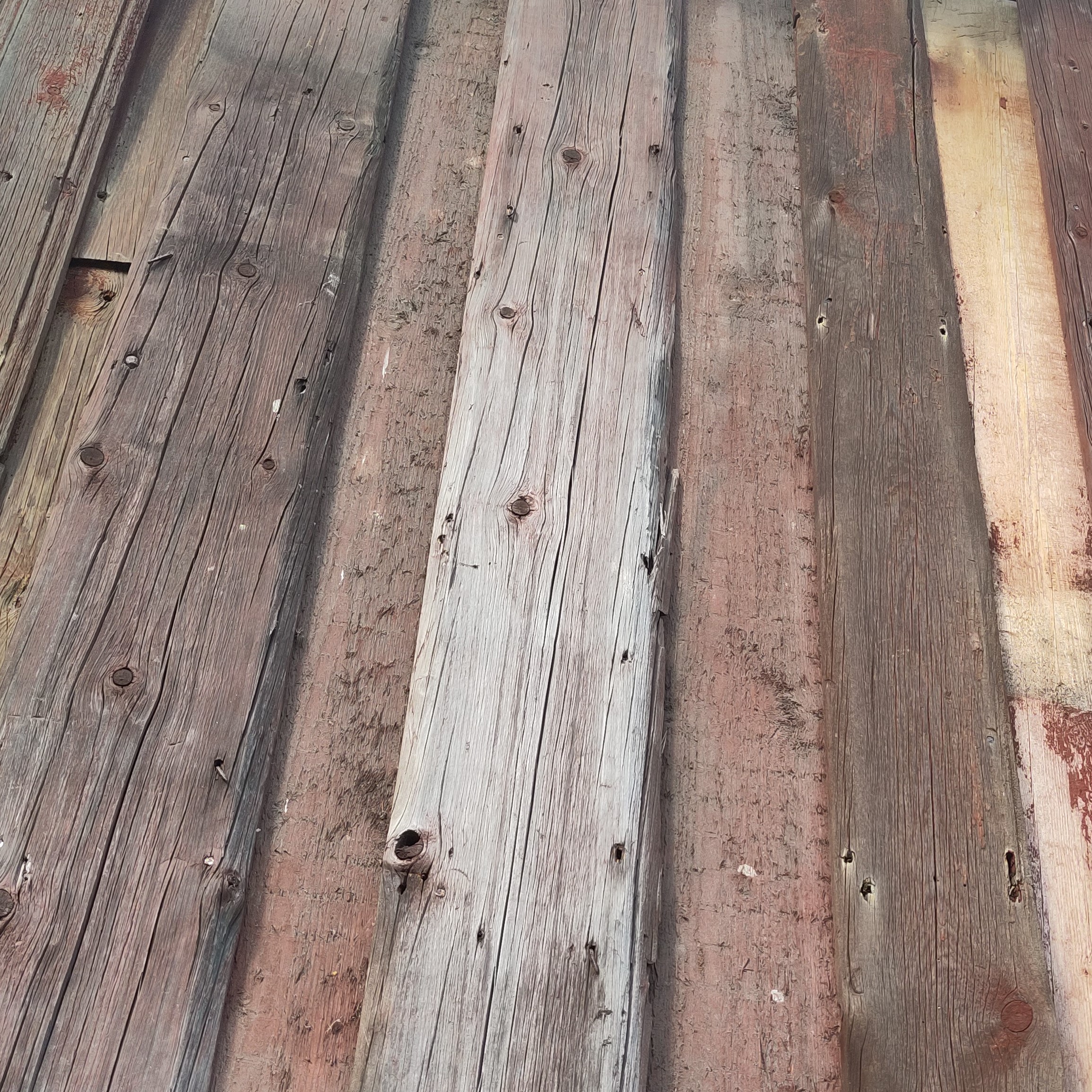When Wood Cladding Degenerates
Lessons on durability from traditional wood claddings after long weathering in real conditions
DOI:
https://doi.org/10.7577/formakademisk.5401Emneord (Nøkkelord):
wood cladding, durability, traditions, decay, performanceSammendrag
For several decades, the mechanisms of deterioration of wood exposed outdoors have been scrutinized to ameliorate the performance of this versatile material when used for purposes such as house cladding. The performance of cladding seems to depend highly on the durability of wood, in turn connected to water uptake, which can vary greatly. How long a cladding can function is particularly complicated to define because of its paradoxical role as a sacrificial and aesthetic layer. However, thanks to reparations and maintenance, many traditional claddings are still preserved. They have been produced and maintained with local resources and show that low-processed wood can be durable in outdoor conditions. The contrast with modern approaches, such as wood modification or importation of durable species, raises the question: what durability of wood is concretely required for cladding purposes? The exhibition shows characteristics of wood weathered for up to hundreds of years, facilitating an understanding of the impact damage can have on the performance of cladding. The samples, issued from traditional French and Scandinavian facades, illustrate how exposure level influences degradation, confirming the role of rot and revealing the ones of erosion and abrasion in the degeneration of wood cladding. Both Alder and Pine seem to have the potential to perform naturally well as cladding for longer than it takes for the trees to regenerate. Traditions might teach us how to use local wood in a durable way if we consider biodegradation as an opportunity to build without creating waste, rather than as a threat.
Referanser
Almevik, G. (2012). Byggnaden som kunskapskälla [The building as a source of knowledge] (Publication No. 27). [Doctoral dissertation, University of Gothenburg]. Acta Universitatis Gothonburgensis. https://gupea.ub.gu.se/handle/2077/28072
Byggforskserien (2022). Byggdetaljer 542.101: Stående kledning [Building details 542.101: vertical cladding]. Norges byggforskningsinstitutt.
Feist, W. C. (1990). Outdoor wood weathering and protection. Archaeological wood, properties, chemistry, and preservation. In R. M. Rowell & R. J. Barbour. Archaeological Wood (Advanced in Chemistry Series, 225, pp. 263-298). http://dx.doi.org/10.1021/ba-1990-0225.ch011 https://doi.org/10.1021/ba-1990-0225.ch011
Frøstrup, A. (2016). Tømrerteori [Corner timber theory]. Universitetsforlaget.
Gobakken, L. R., Mattson, J., & Alfredsen, G. (2008). In-service performance of wood depends upon the critical in-situ conditions. Case studies. IRG/WP: 08-20382.
Godal, J. B. (2012). Tekking og kleding med emne frå skog og mark: frå den eldre materialforståinga [Roofing and cladding with objects from forest and land: from the old material comprehension]. Akademika forlag.
Hill, C., Kymäläinen, M., & Rautkari, L. (2022). Review of the use of solid wood as an external cladding material in the built environment. Journal of Materials Science, 57(20), 9031-9076. https://doi.org/10.1007/s10853-022-07211-x https://doi.org/10.1007/s10853-022-07211-x
Kutnik, M., Suttie, E. & Brischke, C. (2014). European standards on durability and performance of wood and wood-based products–Trends and challenges. Wood Material Science & Engineering, 9(3), 122-133. https://doi.org/10.1080/17480272.2014.894574 https://doi.org/10.1080/17480272.2014.894574
Plesser, T. S., Kristjansdottir, T., Tellnes, L., Flæte, P. O., Gobakken, L. R., & Alfredsen, G. (2013). Miljøanalyse av trefasader [Environmental analyse of wooden facades]. SINTEF Akademisk forlag.
Rentzhog, S. (1986). Stad i trä - panelarkitekturen: ett skede i den svenska småstadens byggnadshistoria [Town in wood – panels’ architecture: a stage in the Swedish history of buildings in small towns]. Nordiska museets handlingar, 2. uppl. (Original work published 1937).
Sandberg, K., & Pousette, A. (2013). Träfasader: Guide för projektering, materialtillverkning, montage, underhåll. (Version 2) [Wooden facades: Guide for planning, making, assembling, maintaining. Version 2]. SP INFO 2013(32). https://ri.diva-portal.org/smash/record.jsf?pid=diva2:961499
Sell, J., & Feist, W. C. (1986). Role of density in the erosion of wood during weathering. Forest Products Journal, 36(3), 57-60.
Sivertsen, M. S. (2010). Liquid water absorption in wood cladding boards and log sections with and without surface treatment (Publication No. 2010:6). [Doctoral dissertation, Norwegian University of Life Sciences]. http://hdl.handle.net/11250/2429312
SS-EN 335. (2013). Durability of wood and wood-based products – Use classes: definitions, application to solid wood and wood-based products. iTeh. https://standards.iteh.ai/catalog/standards/cen/e5d368b1-2232-47e2-8349-ee85cb6c895b/en-335-2013
SS-EN 350. (2016). Durability of wood and wood-based products – Testing and classification of the durability to biological agents of wood and wood-based materials. iTeh. https://standards.iteh.ai/catalog/standards/cen/b02d18a7-87ce-4a20-84c7-c0de641a2780/en-350-2016
Svensson Meulmann, S., & Sjökvist, T. (2023). The potential of uncoated Norway spruce as a façade material—A review. Forests, 14(6), Article 1153. https://doi.org/10.3390/f14061153 https://doi.org/10.3390/f14061153

Nedlastinger
Publisert
Hvordan referere
Utgave
Seksjon
Lisens
Opphavsrett 2023 Géraldine Brun

Dette verket er lisensiert under Creative Commons Attribution-NoDerivatives 4.0 International License.
- Forfatteren(e) beholder sin opphavs- og kopieringsrett til eget manuskript, men gir tidsskriftet varig rett til 1) å fremføre manuskriptet for offentligheten i den opprinnelig publiserte digitale form, og 2) å registreres og siteres som første publisering av manuskriptet.
- Forfatteren må selv forvalte sine økonomiske kopieringsrettigheter overfor eventuell tredjepart.
- Tidsskriftet gir ingen økonomisk eller annen kompensasjon for innsendte bidrag, medmindre det er gjort særskilt avtale om dette med forfatteren(e).
- Tidsskriftet plikter å arkivere manuskriptet (inklusive metadata) i den opprinnelig publiserte digitale form, i minst ett dertil egnet åpent tilgjengelig langtidsarkiv for digitalt materiell, som for eksempel i de norske universitetenes institusjonsarkiv innen rammen av NORA-samarbeidet.
Verket vil bli publisert OpenAccess med en Creative Commons 4.0-lisens som tillater alle å lese, dele og tilpasse innholdet, også kommersielt, under lisensvilkårene:
Dette verket må tilskrives/ krediteres på riktig måte, en lenke må gis til CC-BY 4.0-lisensen, og endringer som er gjort må angis på en rimelig måte, men ikke på noen måte som antyder at lisensgiveren støtter deg eller din bruk.



